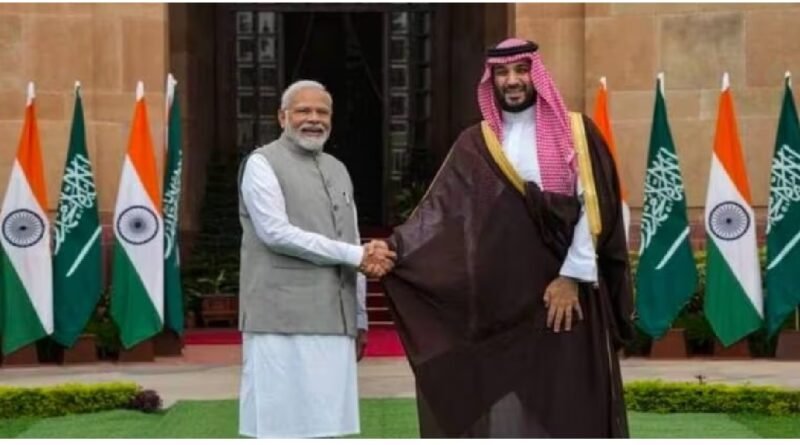A reality check on the India Middle East Europe Economic Corridor
The corridor deserves India’s full-fledged support as it shows there are alternatives to China’s Belt and Road Initiative. Nevertheless, the building of the corridor and its operationalisation will benefit China to some extent because of its competitive advantages. So India mustn’t be under any illusion that the project will selectively boost Indian exports
Is the India Middle East Europe Economic Corridor such a big deal for Indian exports? It might prove a bigger boost for Chinese exports, in reality, especially once the port it is expanding at Gwadar, Pakistan, to ferry goods and passengers by road and rail from Xinjiang through Pak-occupied Kashmir, against India’s opposition, is completed.
The already operational railroad from southern China to Europe runs through Xinjiang. The proposed corridor would facilitate China’s access to America’s Atlantic coast and to western Europe.
An Alternative To BRI
The labelling of the region as the Middle East is a product of British imperial imagination, and continues to be used by western powers. For India, the region is to our west, constituting West Asia. Its very nomenclature reveals the project’s western inspiration. But it deserves India’s wholehearted support, nevertheless, for a reason other than the facilitation it would provide to India’s exports to Europe.
It demonstrates to the developing world that there are alternatives to China’s Belt and Road Initiative, when it comes to adding to the developing/emerging world’s stock of large-scale infrastructure. The project is sponsored by the US, the EU, Germany, France, Italy, Saudi Arabia, the UAE and India.
The bulk of the rail track would go through Saudi Arabia. Hopefully, relations would normalise between Saudi Arabia and Israel by the time the track is completed. Under the US-sponsored Abraham Accords, a number of Arab and Islamic countries, such as the UAE and Sudan, have established diplomatic relations with the Jewish state, and Saudi Arabia is expected to follow suit.
China’s Bet On BRI
The Belt and Road Initiative has been China’s solution to multiple domestic challenges. One is deploying its mammoth foreign exchange reserves accumulated as a result of sustained undervaluation of the yuan and resultant export surpluses.
The Global Financial Crisis revealed that keeping the bulk of the reserves in US treasuries is unhealthy: Beijing’s endless demand for gilts jacked up their price, and thus, lowered the yield. Ultra-low interest rates encouraged reckless lending by banks, besides huge outflow of venture funds and private equity from the US, buying up real assets around the world, including in China.
That reckless lending blew up as the financial crisis. Lesson learned: diversify export surplus deployments away from the dollar and away from foreign currency assets into building real assets in the developing world.
Such assets would facilitate the transport and export of Chinese goods, and win China influence and soft power in the world. Besides, these giant infrastructure projects would provide an outlet for Chinese steel, construction equipment, and building expertise in excess supply in the domestic economy.
The Blue Dot Network Model
The only trouble was that the Chinese chose to finance these projects by giving loans to the countries where the projects were to come up. And on near-market terms. When the countries could not service the debt, the assets passed to Chinese ownership or control, as in the case of the Hambantota Port in Sri Lanka. China is today the world’s largest bilateral creditor, and debt relief for very many developing countries means the Chinese being ready to forgive or restructure the loans these countries have taken from Beijing.
The West and India would like to expose the excess, probably padded, costs in these BRI projects, which increase the debt-servicing burden for the countries that hosted the projects. The US initiated a Blue Dot Network of infrastructure projects, in which costs and financing terms are fully transparent and project selection and award processes are competitive, to optimise cost and quality.
Japan and Australia are on board, as is India. If the new rail project that is at the heart of the India Middle East Europe Economic Corridor serves as an ample demonstration of the superiority of the Blue Dot Network over Chinese usury disguised as external magnanimity, that would serve both diplomatic as well as infrastructure-augmentation objectives.
But China Will Still Gain
However, the physical asset that is constructed would benefit China in two ways. The additional demand for cement, steel, etc created by the project would increase global demand, benefitting the world’s most competitive suppliers. Thanks to both inherent productivity and an undervalued currency, the Chinese stand to gain in this regard.
Then, there is the utilisation of the built-up infrastructure. Chinese fast fashion brands like Shein demonstrate China’s nimble ability to increase and decrease production at scale, to meet global demand. Unless Indian exporters develop such capability, it would be tough to compete with China, or even Bangladesh or Vietnam, in relatively labour-intensive sectors like garments.
Europe’s largest trading partner is China. Saudi Arabia has broken free of American guidance of its external relations to broker peace with Iran, and the mediation was conducted by, and in, Beijing. None of the project’s sponsors have any incentive to restrict Chinese access to the Corridor’s facilities. In fact, the greater the capacity utilisation of the proposed new rail link from Dubai to Haifa, in Israel, via Saudi Arabia and Jordan, the cheaper this bit of logistics would be for everyone making use of it.
India Must Get Basics Right
While we should welcome this bit of infrastructure meant to promote globalised growth, we should be under no illusion that it would provide Indian exporters with any selective boost to otherwise lacklustre performance.
Gaining export competitiveness is not so much a question of gaining an alternative route to Europe in addition to the one via the Suez Canal as improving domestic infrastructure, logistics, technology, financing, import and export procedures, labour practices and willingness to use imports as a goad and input to efficient exports.
TK Arun is a senior journalist. Views are personal and do not represent the stand of this publication.




